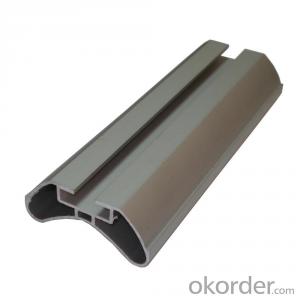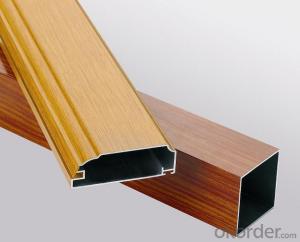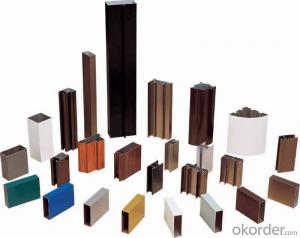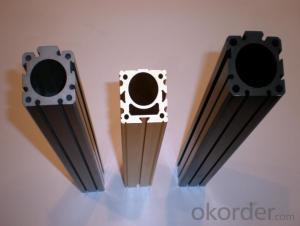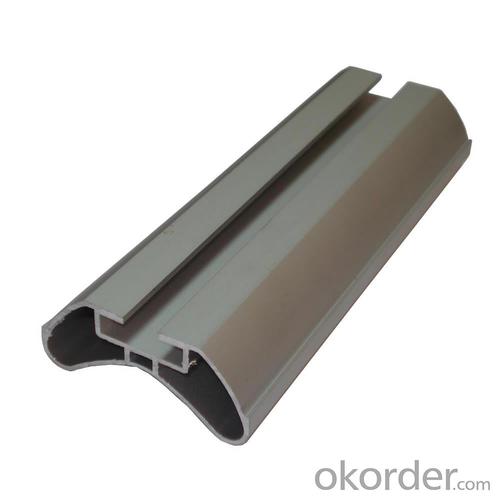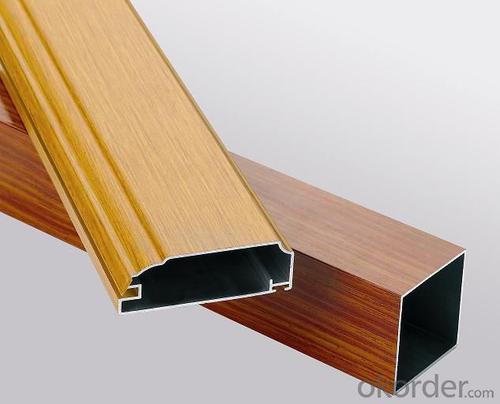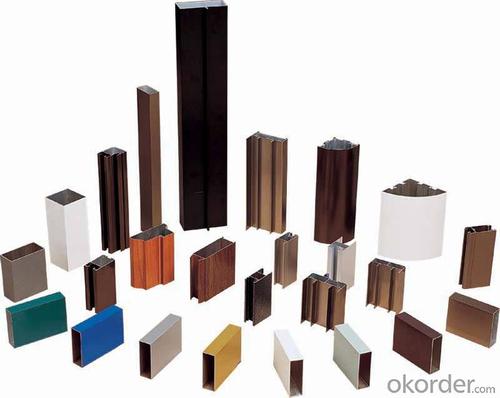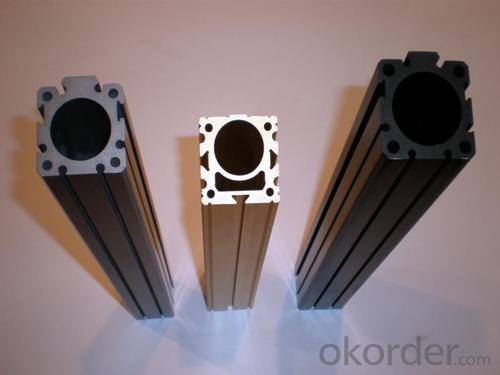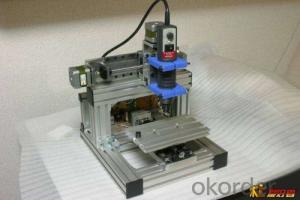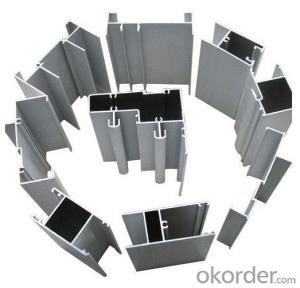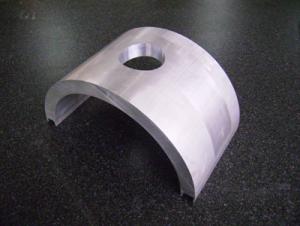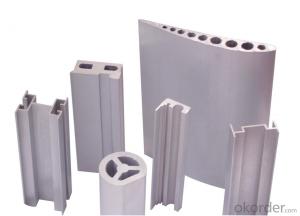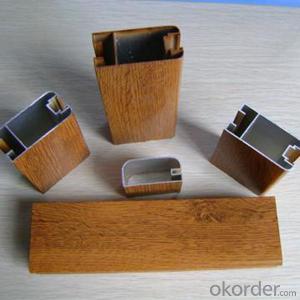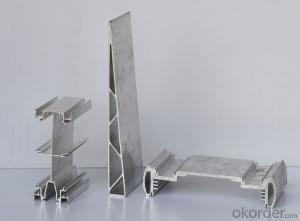China Powder Coated Aluminum Profiles - Manufacturing Aluminium Profile
- Loading Port:
- China Main Port
- Payment Terms:
- TT OR LC
- Min Order Qty:
- -
- Supply Capability:
- -
OKorder Service Pledge
OKorder Financial Service
You Might Also Like
Aluminium profile
1) Alloy: AA6061, AA6063
2) Temper: T5, T6
3) Series of surface treament:
1. Mill Finished
2. Anodizing: Silver, champagne, light bronze, dark bronze, black, light titanium, dark titanium.
3. Electrophoretic Coating: Silver, champagne, bronze, black, light bronze, dark bronze.
4. Electrostatic Color Powder Coating: Normal color, special color.
5. Fluorocarbon Powder Spraying: Normal color, special color.
6. Wood Grain Coating: Import paper, domestic paper.

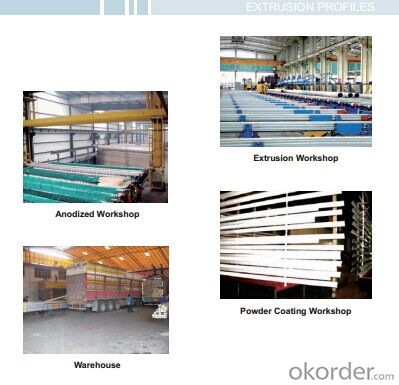
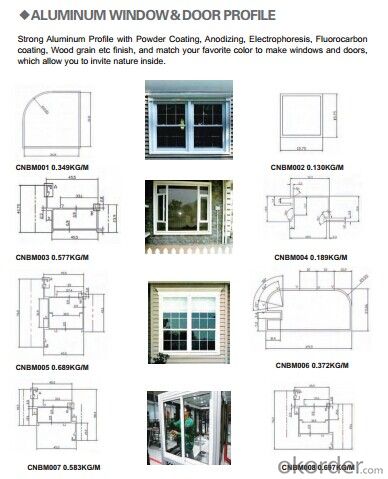
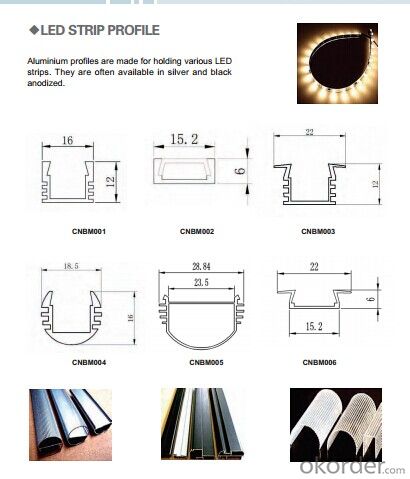

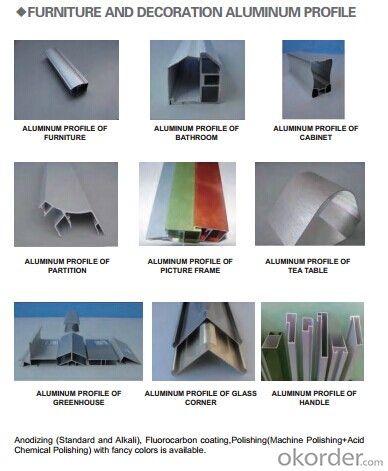
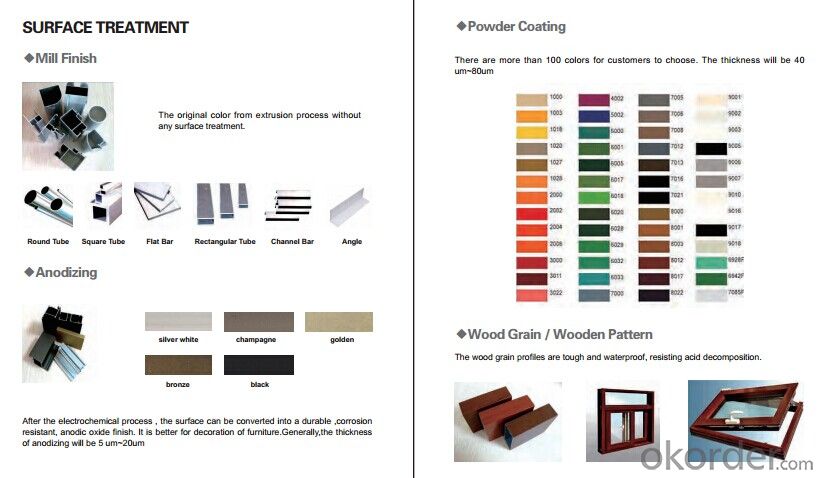
- Q: What are the fireproofing properties of aluminum profiles?
- Aluminum profiles possess excellent fireproofing properties due to their high melting point, which is around 660 degrees Celsius. This allows them to withstand high temperatures and prevent the spread of fire. Moreover, aluminum does not burn or produce toxic gases when exposed to flames, making it a safe and reliable material for fireproofing applications.
- Q: Are aluminum profiles suitable for bathroom fittings and accessories?
- Yes, aluminum profiles are suitable for bathroom fittings and accessories. Aluminum is a versatile material that is corrosion-resistant, lightweight, and durable, making it an ideal choice for bathroom fittings. Aluminum profiles can be used for various bathroom accessories such as towel racks, shower curtain rods, soap dispensers, and shelves. Additionally, aluminum can be easily shaped and molded into different designs and finishes, allowing for customization and aesthetic appeal. Its resistance to moisture and humidity also makes it a suitable choice for bathroom environments. Overall, aluminum profiles provide a practical and stylish solution for bathroom fittings and accessories.
- Q: Are aluminum profiles suitable for use in exterior insulation systems?
- <p>Yes, aluminum profiles can be used for exterior insulation systems. They offer high strength, durability, and resistance to weathering, making them ideal for external applications. Aluminum profiles are lightweight, easy to install, and can be used to create a robust framework for insulating materials, enhancing the energy efficiency and thermal performance of buildings.</p>
- Q: This question asks for methods to prevent aluminum profiles from rusting during the transportation process.
- <p>To prevent rusting of aluminum profiles during transportation, ensure proper packaging with moisture-resistant materials. Use protective films or covers to shield the profiles from direct contact with moisture and humidity. Maintain a controlled environment in the transport vehicle, avoiding high humidity and condensation. Regularly inspect the profiles for any signs of moisture or damage and address them promptly. Additionally, consider using rust inhibitors or anti-corrosion coatings on the aluminum profiles before packaging. Always handle the profiles with care to avoid scratches or damage that could lead to rusting.</p>
- Q: This question asks about the various surface treatments or finishes that can be applied to aluminum extrusions, which are shaped profiles made from aluminum.
- <p>Aluminum extrusions can be finished in several ways to enhance their appearance, durability, or functionality. Common finishes include anodizing, which provides a protective oxide layer; powder coating, offering a wide range of colors and textures; painting, which can be done electrostatically or by hand; polishing, resulting in a shiny, smooth surface; brushing, which creates a satin-like finish; and chromate conversion coating, which is a pretreatment for further painting or coating. Other finishes include wood grain transfer, which gives an aluminum surface a wood-like appearance, and various types of protective films or laminates. Each finish serves different purposes, from improving aesthetics to increasing corrosion resistance.</p>
- Q: Are aluminum profiles suitable for escalator handrails?
- Yes, aluminum profiles are suitable for escalator handrails. They are lightweight, durable, and have excellent corrosion resistance, making them an ideal choice for ensuring safe and reliable handrail operation on escalators.
- Q: Is it possible to recycle aluminum profiles and incorporate them into new construction projects?
- <p>Yes, aluminum profiles can be recycled and reused in new building projects. Aluminum is highly recyclable, and the recycling process is energy-efficient, requiring only 5% of the energy needed to produce new aluminum. Recycled aluminum maintains its properties, making it suitable for various applications in construction. This practice not only conserves resources but also reduces waste and environmental impact.</p>
- Q: What are the bending capabilities of aluminum profiles?
- Aluminum profiles have excellent bending capabilities due to their malleability and ductility. They can be easily formed into various shapes and angles, making them versatile for a wide range of applications. However, the specific bending capabilities may vary depending on the alloy and temper of the aluminum profile.
- Q: Can aluminum profiles be used for access platforms?
- Access platforms can indeed make use of aluminum profiles. Aluminum, a material that is both lightweight and durable, finds wide application in the construction and industrial sectors. Renowned for its corrosion resistance and superior strength-to-weight ratio, aluminum is highly suitable for access platforms. The versatility of aluminum profiles allows for easy fabrication into diverse shapes and sizes, catering to the unique needs of an access platform. Furthermore, aluminum possesses the added benefits of being non-magnetic and non-sparking, rendering it advantageous in specific environments. All in all, the utilization of aluminum profiles for access platforms ensures a secure and dependable solution.
- Q: What materials are used for aluminum profile packing?
- if the surface requirements is not high, three point type packaging is also common, some products need to add pearl carton / wooden packaging. Shanghai aluminum products Co., Ltd.
Send your message to us
China Powder Coated Aluminum Profiles - Manufacturing Aluminium Profile
- Loading Port:
- China Main Port
- Payment Terms:
- TT OR LC
- Min Order Qty:
- -
- Supply Capability:
- -
OKorder Service Pledge
OKorder Financial Service
Similar products
Hot products
Hot Searches
Related keywords
